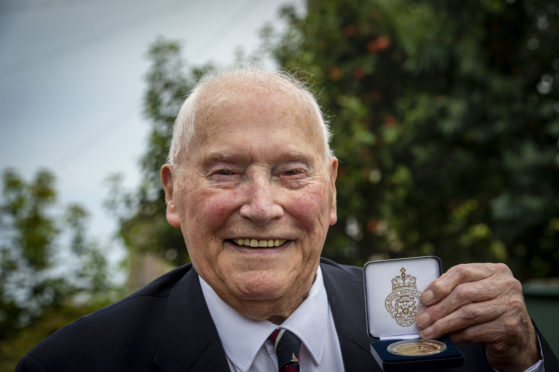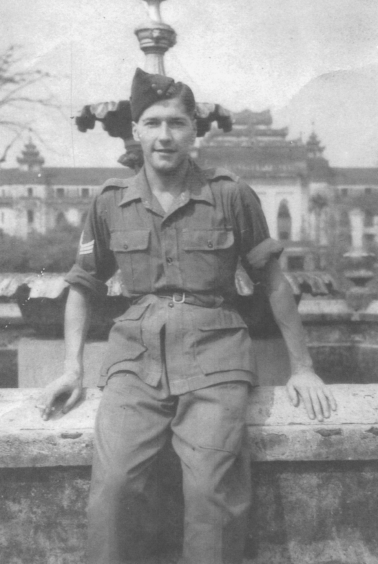A special commemorative coin is being issued to surviving members of the war in the Far East, as the 75th anniversary of VJ Day beckons.
The items are gold in colour and will be presented to any veteran involved in the Allied War effort during either VE Day or VJ Day.
The inscription on the 250 artefacts reads: “In Commemoration of the 75th Anniversary of Victory by the Allies in World War II – 1945-2020.”
Whitson Johnson, 96, from Portobello, who joined the RAF in November 1942, has already received his coin.
“I wanted to fly,” said Mr Johnson, but after undertaking and completing all of the training, he was given the bad news that the flying programme had been terminated and he would be given a new assignment.
Mr Johnson said: “After being told that I would not be flying, we were put on leave and told to report to London thereafter.
“Eventually, after sitting some tests, I was offered another job. That job was learning about top-secret codes and ciphers for the RAF.
“I had to sign the Official Secrets Act.”
It was at this point Mr Johnson learned he was being deployed to the Far East. “You just did what you were told,” he added.
His unit worked in support of the Fourteenth Army. He spent time in Bombay, Calcutta, Chittagong, Hmawbi and Burma.
Mr Johnson has vivid memories of VJ Day: “As far as I was concerned, 15th of August was when the war ended. That was a great day. I will never forget it.
“By dropping those bombs, so many lost their lives, but so many others would have died had that not happened, as Japan would have fought to the last man. A lot of lives were saved on both sides because the bombs were dropped.
“War is a terrible thing. I learned that lesson and I realise there is no point in war. I am glad that the war finished when it did, and the Allies were victorious. I can hardly believe that it has been 75 years since that day.
“I have had a great life and a wonderful family, with grandchildren and great-grandchildren. I’ve been very lucky.”
Mr Johnson was presented with his commemorative coin – from a safe distance – by Martyn Hawthorn, the chairman of Legion Scotland.
He said: “It is vital, as we approach the 75th anniversary of VJ Day, that the bravery and sacrifice of the men who fought in the Far east is forgotten no more.
“The Commemorative Coin is our way of providing a symbol of their immense efforts during what was an arduous campaign.”
The forthcoming VJ Day commemorations will be marked by a series of “virtual” events organised by Armed Forces charities Legion Scotland and Poppyscotland, in partnership with the Scottish Government.
A series of programmes will be broadcast live via the charities’ social media channels to mark the milestone anniversary.
A virtual service of remembrance will be shown from 10.35am on Saturday August 15 and will be followed at midday by a virtual concert.
The Far East campaign began on 7th December 1941 when Japan attacked the American naval base at Pearl Harbour. The British colony of Hong Kong was attacked the following day and, over the subsequent weeks, the British retreated to Singapore, where they were forced to surrender with more than 9,000 men killed or wounded. A further 130,000 were captured and became POWs.
The Allied fightback began in 1944 and was led by the British Fourteenth Army, the largest all-volunteer army in history.
The campaign to recapture Burma was one of the longest fought by the British during the conflict, but they finally entered Rangoon in May 1945.
Just as they prepared to progress to Malaya and Singapore, the atom bombs fell on Hiroshima and Nagasaki, leading to the Japanese surrender on August 15.

